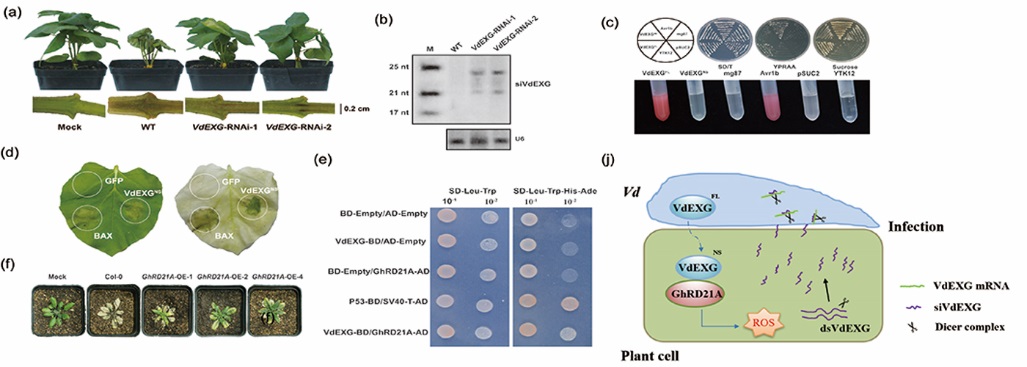Recently, Team of Intelligent Design and Biosynthesis of Agro-microbes of Biotechnology Research Institute (BRI) of Chinese Academy of Agricultural Sciences (CAAS), in collaboration with the Institute of Plant Protection (IPP) of CAAS and other research units, illustrated a new mechanism of interaction between pathogens and plants, and constructed new cotton germplasm with high resistance to Verticillium wilt. The work, entitled “A Verticillium dahliae exoglucanase as potential HIGS target interacts with a cotton cysteine protease to confer resistance to cotton Verticillium wilt”, was published online in Plant Biotechnology Journal on Mar. 16, 2024.
Verticillium wilt caused by Verticillium dahliae (Vd) is known as the "cancer" of cotton. Due to the lack of natural disease-resistant germplasm resources, control is extremely difficult Moreover, there exists a strong co-evolutionary relationship between pathogen and host plant, with an "attack-defense-counter defense" scenario resembling an endless molecular arms race. Therefore, elucidating the molecular mechanism of Vd-host interaction is essential for excavating effective disease-resistant breeding targets and cultivating high-resistance cotton germplasm.
In this paper, the Vd exoglucanase plays an important role in the pathogen's carbon source utilization, ability to penetrate cell walls, and pathogenicity. Based on trans-kingdom RNAs interference technology, a plant protection strategy was designed, creating new cotton materialswith high resistance to Verticillium wilt through the transgenic VdEXG-RNAi gene. Further research discovered that this protein, acting as an effector, can be recognized by the cysteine protease and induce systemic immune response in cotton against the infection of Vd. The research results provide new genetic resources and theoretical basis for the integrated control of Verticillium wilt and cotton biological breeding.
Professor Hongmei Cheng (BRI, CAAS), professor Xiaofeng Su (BRI, CAAS) and associate professor Zhiqiang Li (IPP, CAAS) are the corresponding authors. Professor Xiaofeng Su (BRI, CAAS), Ph.D student Qi Wang (BRI, CAAS), and associate professor Tao Zhang of the Institute of Microbiology of Chinese Academy of Sciences (currently a professor at the Xinjiang Institute of Ecology and Geography Chinese Academy of Sciences) are the co-first authors of the paper. This research was supported by the National Key R&D Program, the National Natural Science Foundation of China, and the Science and Technology Innovation Program of CAAS.
More details can be found at the link: https://doi.org/10.1111/pbi.14330

|